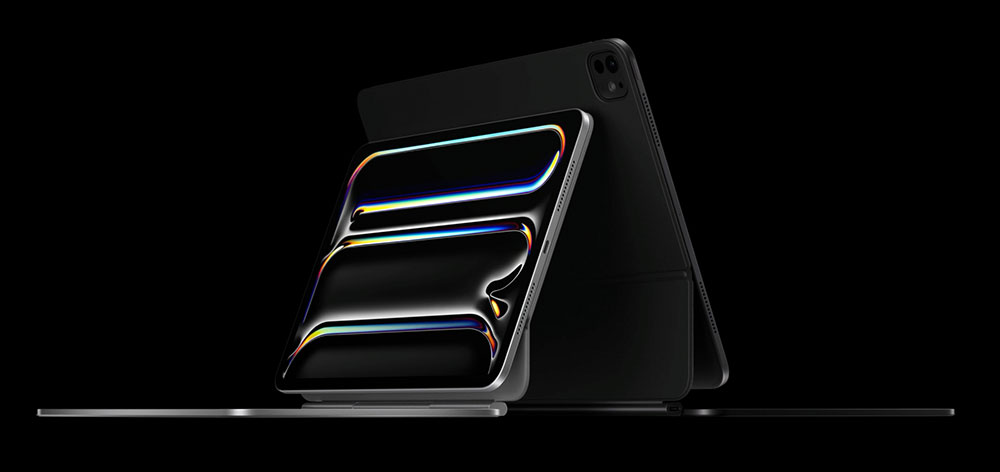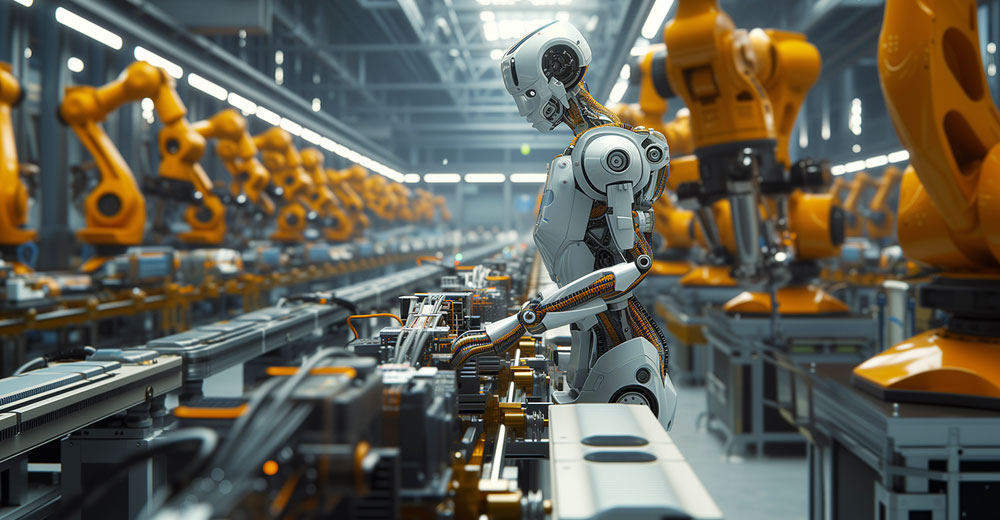I participated in a podcast last week. One of the other panelists was Moses Ma from FutureLab. FutureLab has a project called Manhattan 2, referencing the Manhattan Project for nuclear bomb development. However, this project is focused on helping, not killing people, and on the need to develop a human-centric approach to AI deployment that assures people have productive lives rather than being homeless and unemployable, which is, sadly, the path we are on currently.
Another company I met with is Level Ex, which uses video game technology developed by video game programmers and subject matter experts to spin up human employees for new jobs and tasks in a matter of hours, not years. This could potentially enable people to compete better with AI.
Let’s discuss how we could have a better post-AI future this week. We’ll close with my Product of the Week, the impressive new iPad Pro, which is, by a significant margin, the best tablet in the market right now.
The AI-Jobs Problem
Every Industrial Revolution has created concerns about lost jobs, and those concerns have abated with the jobs created by the recent technology, which worked out well eventually. I say eventually because there have been a lot of issues with the transitions, particularly with older workers who may lack the time or interest to be retrained, often leading to spikes in unemployment.
But this latest AI Industrial Revolution is hugely different because we aren’t automating a process so much as we are creating technology to replace individual people. Devin is a case in point. It is an AI employee that is on the market to fill an actual job. Rather than hire a human, you can just buy Devin.
AI and robots are not just being created to fill new jobs. They are being made to fill jobs where there are shortages. Long-haul drivers, for instance, who are in very short supply, are being supplemented and potentially replaced by self-driving trucks.
In addition, fast-food restaurants, where staffing post-pandemic has been tough, are looking at replacing all the employees with robots and AI. I haven’t tried one of these automated burger joints myself yet, but I did try the automated Barista created by Dell a few years ago, and it was, quite honestly, the best cup of coffee I’d ever had from a store. Even back then, robots and AI could do many things better than people.
But where are the big job openings in our AI future? Won’t they be the jobs this future creates because no one does those jobs today? So why wouldn’t companies spin up AIs in hours rather than retrain humans over years?
More importantly, who will buy the goods that companies make if we replace most or all workers with AI and robots? AI and robots have no income. For now, they are programmed to do specific tasks. They don’t need to eat, have homes, or commute to work.
FutureLab’s Manhattan 2 Project
Manhattan 2 is a fascinating project that outlines a plan to ensure future AI development and deployment that enhances employees and minimizes displacement at scale.
What seems to set this project apart is that the plan puts employees, not AIs, at the center of the effort. Most AI deployments just focus on the AI part; if it displaces people, well, that is just a side effect that is, unfortunately, way too common.
The new jobs will be AI-related, so people will need to improve their AI skills quickly. It will be similar to learning a new language or musical instrument. For instance, I’ve wanted to learn how to play the piano but have been unwilling to put in the effort, and I expect there are many folks out there like me. We’ll talk about making the learning process easier in a moment.
The Manhattan 2 project lays out the critical requirements for progress. FutureLab provides a hands-on VC approach that blends financial assistance with practices that help various companies create more human-centric AI services that wrap their AI products.
The elements include hands-on learning, a tight focus on creativity, a directed focus from the technology to its practical application, peer coaching for the companies participating in the program, progress tracking, and a unique solution for those with ADHD to help their focus skills. There is a product called BrainstormBot that is AI-based and can be applied to both startups and universities to help with this learning process.
Manhattan 2 is an impressive effort.
Level Ex
Level Ex is one of the most interesting training programs I’ve seen. Imagine learning a skill from a video game. In fact, imagine if most of your applied education was in video games, and imagine if the knowledge behind the video game could be used to train people and AIs.
What Level Ex has been doing is mainly focused on doctors. It uses games that allow doctors to pick up specialties in two hours, knowledge that normally takes one or two years to master. It was developed for the Mars mission because they realized that if someone were injured, they couldn’t ship a hospital and entire staff to Mars, and getting help remotely from Earth would be difficult due to latency and data rate issues.
In that scenario, the Mars medical officer would spin up an AI to help diagnose the problem. Then, after directing the doctor on any immediately necessary remediation, the officer would advise and serve up a video game-based training program that would make the doctor an expert in the needed procedure.
Now, imagine using this tool to spin up employees on AI skills. Rather than spending months or years to transition an employee, you would spend hours.
Instead of traditional book and lecture methods, employees are learning through video games. This approach not only demonstrates skills but also allows them to be practiced in simulations.
Initial mistakes, which are expected, cause no real damage. Employees can experiment with different processes and decisions, exploring alternative outcomes without risking their jobs or careers.
Any time you need to retrain, employees can just play a different game. I’ve heard that the doctors who use this tool like the games so much they often play them just to kill time. Can you imagine doing something you’d typically do for leisure and fun and magically making yourself more valuable as an employee?
The Level Ex training program is incredible.
Wrapping Up: A Better Future
We are approaching a significant catastrophe of massive unemployment coupled with an equally enormous lack of jobs to employ those who have been displaced. In addition, the rate of change not only means that most people who are now in school will find their education wasn’t adequate for the available jobs, but they will be unable to change their skill set fast enough to be competitive with AIs and robots.
That doesn’t have to be the case. Using the outline from the Manhattan 2 project coupled with the game-based training of Level Ex, not only can we create plans and opportunities that mitigate this employment risk, but we can also make people far more competitive with AIs, significantly reducing the chance they will be unemployable while translating the tedium of training to the fun of gaming.
Retraining doesn’t sound fun to me at all, but I’m a gamer. I like playing video games that are interesting, and having a game that is fun to play and relevant to my career would be unbelievably awesome.
We can have a better future. We just have to make that a priority. Tools like those from FutureLab and Level Ex will help make that better future possible.

The New iPad Pro
If you know me, you know I’m not an Apple fan, but Apple does have some impressive products. Right now, the Apple Watch is arguably the best device of its type in the market.
While the iPad once represented a threat to the PC — a threat that Microsoft countered poorly with its Surface — it never fully realized its potential, often resembling a limited PC more than a breakthrough device. The latest iPad Pro has knocked it out of the park.
I’d argue that because of this new iPad Pro, the Mac is, for now, at least, the poorer sibling. The iPad Pro is awesome! I have no idea how Apple packed this much performance and more than adequate battery life in this thin product.

The new iPad Pro 11-inch and 13-inch models are both available in space black and silver. The keyboard is sold separately. (Image Credit: Apple)
OMG, the display is like my own wish list for the perfect tablet display. Typically, you can get great color or outdoor viewability, but not both. Not anymore. The iPad Pro not only has a wonderful OLED display, but it is powerful enough to use outside.
I am a tad concerned about how long this display will last since OLEDs at normal power wear out far faster than LCDs, and the extra power should accelerate that process — though we won’t know for sure until these have been in the market for a while. Some early testers have complained about color accuracy, but, to me, this device is simply fantastic!
The M4 chip is also impressive. While the new Qualcomm Snapdragon X is better on paper, the M4 comes closer than any other part currently being used in tablets.
The iPad Pro has better keyboard options, haptics, and a better stylus option, the new Apple Pencil Pro than any prior iPad models. Some of these features are also compatible with the iPad Air.

Apple Pencil Pro brings support for Find My for the first time to Apple Pencil, helping users locate Pencil Pro if misplaced. It pairs, charges, and is stored on the side of the iPad Pro with a new magnetic interface. (Image Credit: Apple)
Additionally, it outperforms the current Surface line, which Microsoft developed specifically to compete with the iPad Pro. (I still wonder if Microsoft plans to discontinue the Surface because it really isn’t marketing that line anymore).
In the end, I’m more than impressed with the new Apple iPad Pro. At least for now, nothing comes even close to what this product has and can do, so the new iPad Pro is my Product of the Week.



























































Human-centered AI is pivotal in mitigating future unemployment risks by focusing on collaboration rather than replacement. Emphasizing AI’s role in enhancing human capabilities and creating new job opportunities through ethical design and policy frameworks is crucial. By prioritizing inclusive AI development that considers societal impact and reskilling initiatives, we can navigate towards a future where technology supports rather than displaces the workforce.